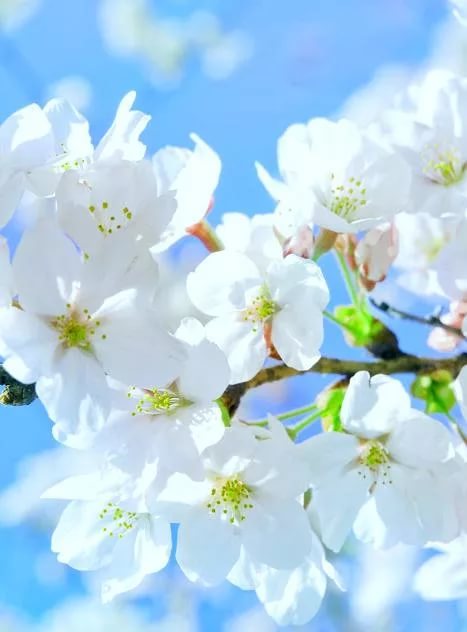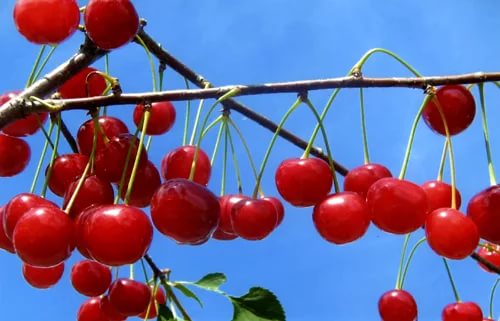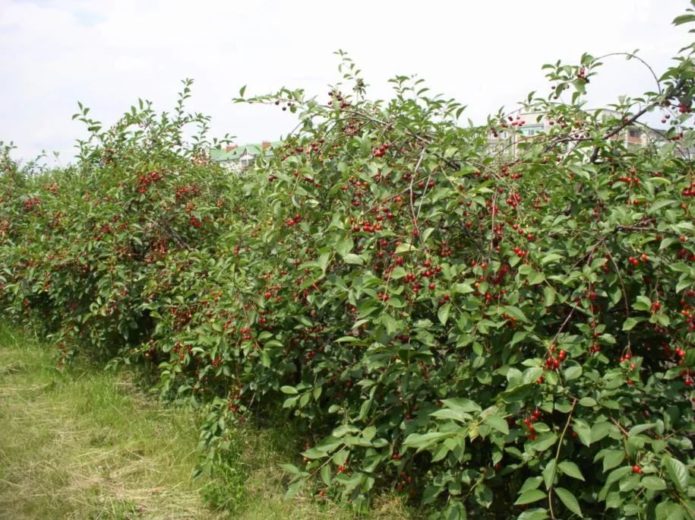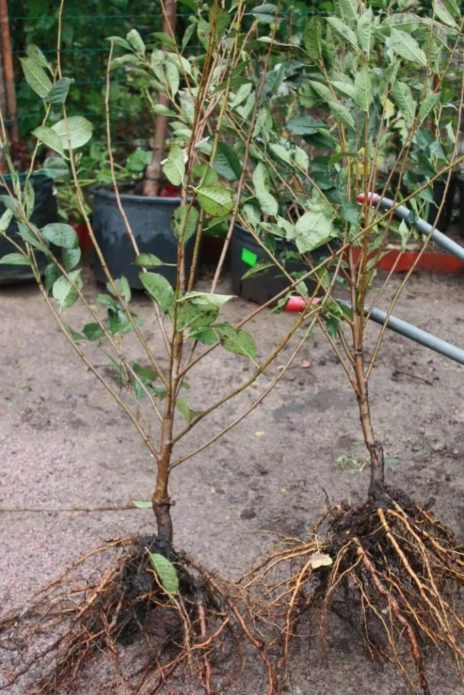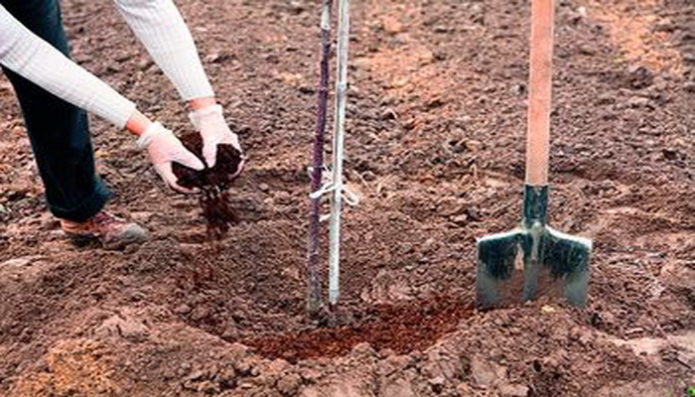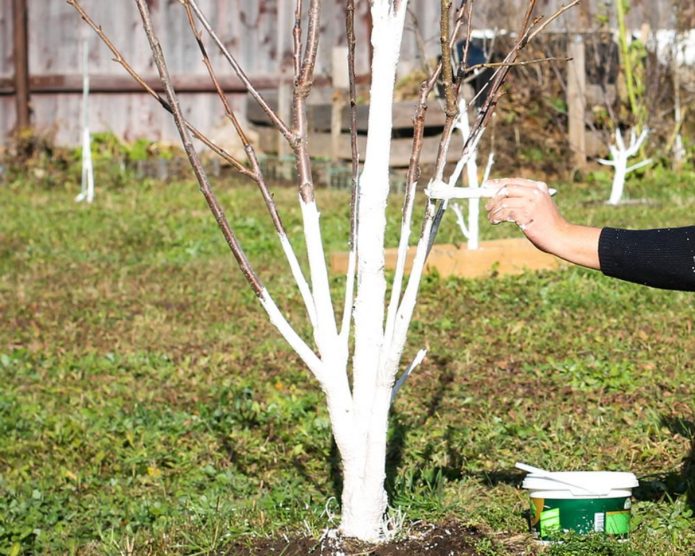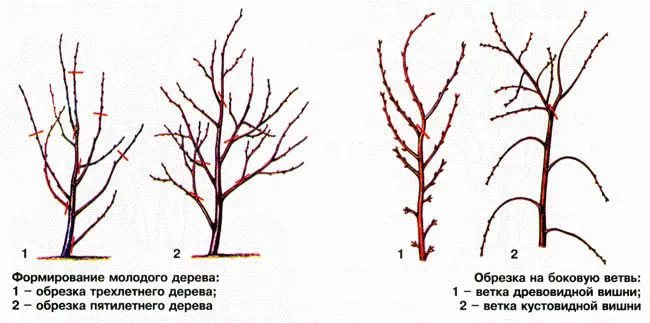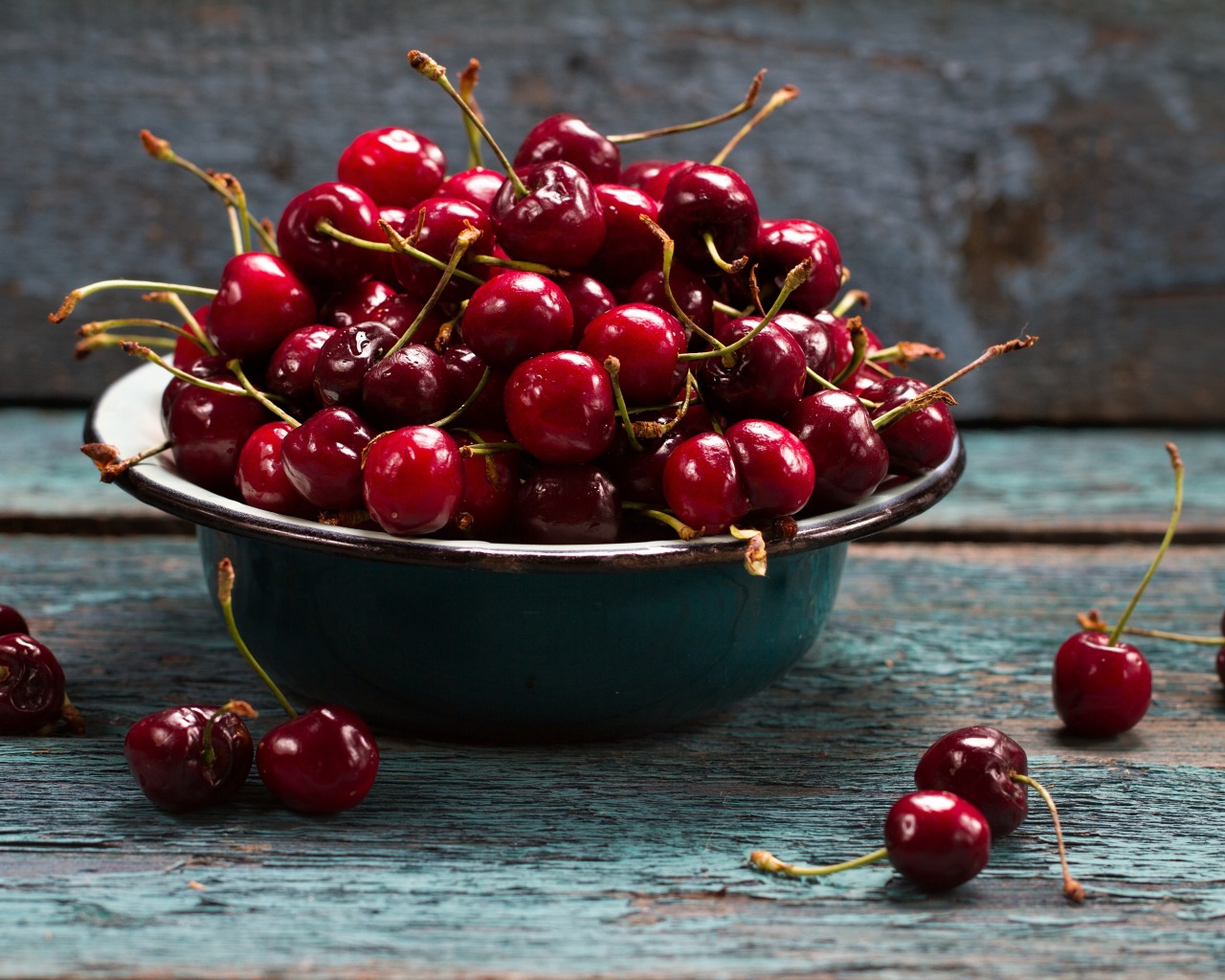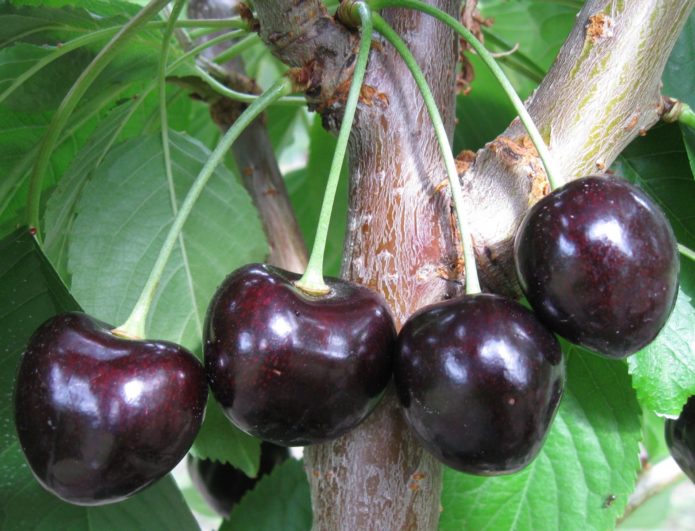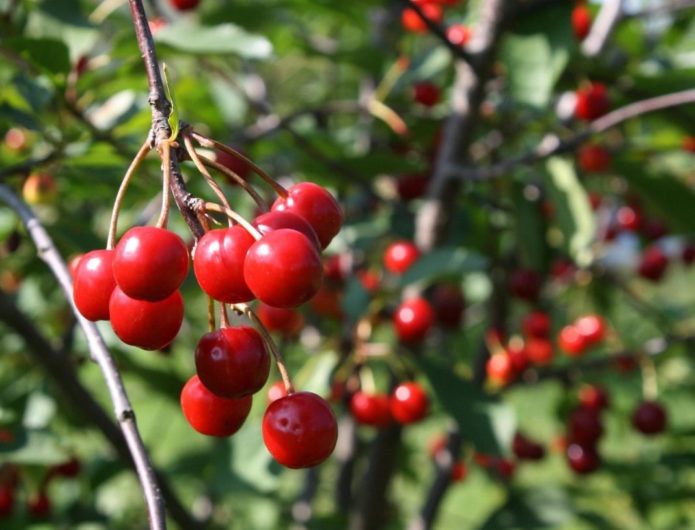The Sakura Blossom is celebrated annually in Japan and is elevated to the rank of a national celebration. And in the children's fairy tale of the Italian Gianni Rodari "The Adventures of Chippolino" among the aristocratic plants, Cherry takes the position of a count. It is not surprising that the nobility and unique sophistication of the cherry was noted in different parts of the Earth. She conquers artists with the beauty of flowers and grace of lines. Its taste captivates with aromatic astringency of gourmets. Dessertnaya Morozovaya cherry is distinguished not only by tasty fruits, but also by resistance to low temperatures, for which domestic gardeners love it.
Content
The history of the emergence of Dessertnaya Morozova cherries
Cherry Dessertnaya Morozova was bred in the All-Russian Research Institute of Horticulture. I.V. Michurin on the material of Vladimirskaya cherry in 1987. It got its name in honor of the author Tamara Morozova.
The authorship of Tamara Morozova, in addition to this variety, also belongs to the cherries Tamaris, Morozovka, Lebedyanskaya, Victoria, Ryazanochka, Lyusinovskaya and cherry varieties Galatea, Michurinka, Pink Pearl, Rondo.
It is known that sweet cherries are rarely winter hardy. Tamara Morozova managed to get a really successful variety, characterized by high winter hardiness (it perfectly tolerates the harsh winters of central Russia), combined with excellent taste.
Description of the variety
This cherry is recommended for cultivation in the Central Black Earth Region. A tree of medium height, fast-growing, with a spherical spreading sparse crown. The bark of the trunk is brown. Shoots are smooth, straight. The leaves are large, light green, with a crenate edge. This variety is characterized by a tendency to bare branches in the absence or untimely pruning. The flowers are large, white, collected in inflorescences, with rounded petals, the pistil protrudes slightly above the stamens. Early flowering variety.
The fruits are large, even, their weight is in the range of 3.8-4.2 g. The berries are dark red with juicy sweet and sour pulp. They are distinguished by good transportability.
Cherry varieties Dessertnaya Morozovoy early - the grafted tree begins to bear fruit in the fourth year. The berries are usually harvested in the second half of June. One tree bears 20–35 kg of berries.
Unfortunately, Dessertnaya Morozovaya cherry has an average resistance to coccomycosis.
Landing features
Planting cherries of this variety does not differ from plantings of other stone fruits. Gardeners differ only on planting times. Some summer residents believe that planting is best in the fall, so that the rooted seedling develops in spring. And some, fearing recurrent spring frosts, suggest planting annual cherry trees after the snow melts, before budding, believing that this way the seedling will develop in more comfortable conditions and will get stronger by winter. In any case, seedlings with an open root system are planted, as a rule, in the spring, and for containerized ones, the planting time is not important.
Cherry seedlings that are 1–2 years old take root best.
For a tree, it is necessary to find a sunny area that rises above the underlying groundwater by at least 2–2.5 m. Cherries are not planted in the lowlands. If you plan to plant cherry seedlings next to buildings, then you need to focus on the south side of the buildings so that the tree is protected from northern winds. Cherry prefers slightly acidic or neutral soils. In composition - sandy loam or loamy. It is recommended to add 1 bucket of sand to the planting hole before planting to improve the texture of the soil.
Cherry planting process:
- Dig a hole 80 cm in diameter and 60 cm deep.
- The top fertile layer is separated.
- Gravel is poured at the bottom for drainage.
- Add 3-5 kg of dolomite flour to deoxidize the soil and provide the tree with calcium.
- Humus is mixed with the surface layer of soil and dolomite flour.
- Cherries are planted without deepening the root collar, so as not to provoke the appearance of root suckers.
- Tie the seedling to the planting peg.
- The soil is tamped around the tree, forming an irrigation hole.
- Pour in 1–2 buckets of water.
- After the water is completely absorbed, the soil is mulched with dry peat, rotted sawdust or humus.
When humus or compost is added to the planting hole, there is no need to add mineral fertilizers. In the future, it will be necessary to feed the cherries no earlier than in 2-3 years.
Experienced gardeners recommend to cut off up to 80% of the leaves in the first year after planting for better survival of the seedling.
Wood care tips
Cherry Dessert Morozova does not require special care measures. To obtain a stable harvest, you must:
- loosen the trunk circle;
- apply fertilizers if necessary;
- provide full watering;
- cut branches in time;
- protect from pests, carry out prevention and timely treat diseased trees.
Some gardeners in the spring fall asleep snowdrifts around the cherries - this slightly delays the flowering time, saving delicate flowers from recurrent frosts. To save the bark from damage, trees need to be whitewashed in autumn: the trunk of adult cherries - up to 1.5–1.7 m and the base of skeletal branches, and young ones - up to the branches.
Nitrogen fertilizers: urea and ammonium nitrate are applied only in spring, and in summer, during the formation of ovaries, trees are fed with nettle infusion or mullein infusion. 5 buckets of water are poured onto 1 bucket of mullein, 1 kg of ash is added and then insisted for a week. The resulting composition is diluted with water in a ratio of 1: 5 and 2 buckets are added under each tree.
It is recommended to water the cherries several times during the season, using at least 2-3 buckets of water under each tree. Important periods for watering:
- the beginning of flowering;
- shedding of flowers and the formation of an ovary;
- immediately after harvest;
- in the fall, most often in October.
The irrigation scheme can be revised depending on the amount of precipitation.
Standard techniques are used to trim the branches of this cherry. Dry and damaged branches are removed in early spring. In the future, pruning for fruiting and prevention of thickening is carried out.
For the prevention of coccomycosis, use:
- ash-salt spraying in early spring: take ash, salt and laundry soap in a ratio of 6: 1: 1, dilute in 10 liters of water, boil for 5 minutes and cool;
- iodine spraying: dilute 10 ml of iodine tincture in 1 bucket of water; process trees three times before flowering with an interval of 3 days;
- treatment with potassium permanganate solution: dissolve 5 g of potassium permanganate in 1 bucket of water and spray the cherry three times: in the "green cone" phase, after flowering and when the fruit is ripe.
The variety Dessertnaya Morozovoy is partially self-fertile, that is, it can set only 7–20% of the fruit on its own. As pollinators, it is best to take the varieties Vladimirskaya, Griot Ostgeimsky, Griot Rossoshansky, Studencheskaya, which can increase yields.
Video: how to increase the yield of cherries
Gardeners reviews
And I have this trouble: this year there are no increments at all and the leaves are very small. But not "scalded", as it seems to me it happens with moniliosis. Cherries have been growing for 4 years one Dessert Morozova, the second Kharitonovskaya. There were a lot of buds, no ovaries at all. That year there were the first berries, but very few. Both varieties are very large. One is red, the other is almost black.
Hello, members of the forum! Tasty cherry is a sore subject for me, I live near Smolensk. We have a good nursery_ branch of the Crimean op. station. For 6 years now I have been doing gardening with varying success. She planted cherries Zhukovskaya, Orlitsa, Dessertnaya Morozova, Kharitonovskaya, and ordered 3 varieties from Chelyabinsk. Zhukovskaya and Dessertnaya Morozova are very sick with me, maybe because of my oversight.
I have dessert Morozova. Really like. Cherries are large, scarlet, with shine, the sweetest of cherries. Looks very nice. It is spreading, and the leaves are large. Sparrows love her because she is sweet. I hang CDs, they scare away sparrows well. Fruits are large, keep their shape well when frozen. I would recommend it.
For a long time, two varieties of cherries fought for leadership in the hearts of gardeners and the prevalence in the plots: Vladimirskaya and Lyubskaya. Now practically nothing has changed, only the competition is between their descendants. This is nice, because the needs are growing, which means that the work of breeders should not stop and delight us with finds.
